The ERASMUS+ traineeship supported me in completing my semester abroad for my Master’s thesis work. I had the opportunity to travel to Bermuda, as a British overseas territory, and work at the Bermuda Institute of Ocean Sciences (BIOS). During my 6 months at BIOS I was able to work on a variety of projects, including my personal thesis project, and participate in a scientific diving course through AAUS, as well as explore the beautiful island country.
Bermuda is an isolated island in the North Atlantic, first colonized by the British in 1607, after being originally discovered by the Spanish a hundred years prior. Known by locals as “Bermy” or “The Rock”, it is actually a chain 181 of volcanic islands that lay ~600km from America’s east coast in the famed “Bermuda Triangle”. These islands have been eroded to low lying land over the years, resulting in a relatively flat topography over the 53 square kilometers that make up Bermuda. Known for its pink sand beaches and numerous shipwrecks, it is full of culture, mixing both Caribbean and traditional British influences into an amazing island atmosphere.
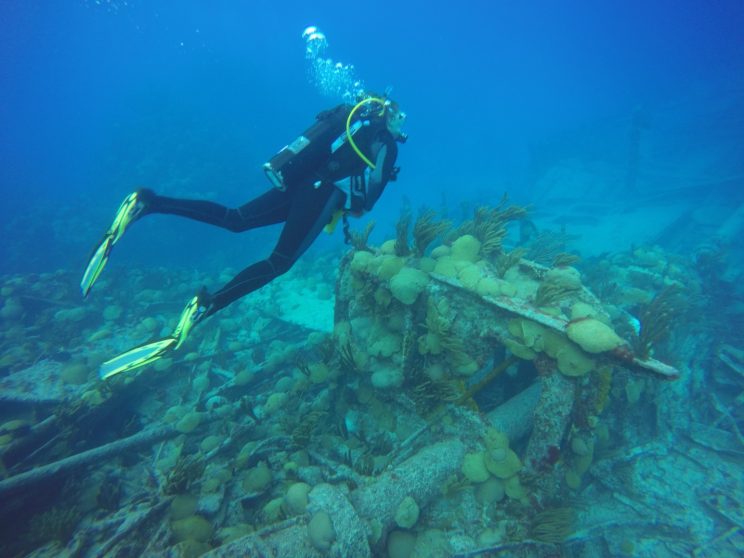
Diving the Pelinaion, one of the hundreds of ships wrecked around Bermuda. She was a cargo steamer that stopped to refuel and ran aground on the reef surrounding St. David’s head. She was a casualty of WWII, as the lighthouse had been blacked out to deter German spying on Bermuda.
Often mistaken as a tropical Caribbean island due to its warm weather and rich marine life, Bermuda is actually sub-tropical and supports the Northern-most coral reefs in the world. It was these coral reefs that brought me to Bermuda for my Master’s thesis. Working at BIOS, I was a part of the Coral Reef Airborne Laboratory Project (CORAL). CORAL aims to create the first comprehensive assessment of reef condition on a global scale using a state-of-the-art Portable Remote Imaging Spectrometer (PRISM). The primary goal is to “provide critical data and new models needed to analyze the status of coral reefs and to predict their future” (Dierssen, 2013). The CORAL campaign has two primary objectives:
- measure the condition of representative coral reefs across the global range of reef biogeophysical values. The primary indicators for coral reef condition are benthic cover (ratio of coral, algae,and sand), primary productivity, and calcification.
- Establish empirical models that relate reef condition to biogeophysical forcing parameters (Dierssen, 2013).
These objectives hope to answer the principal questions of what the current state of coral reefs are and how will this change with natural and anthropogenic stressors. It will attempt to achieve this by using a newly created Portable Remote Imaging Spectrometer (PRISM) (Dierssen, 2013).
CORAL is a one-time assessment of reefs. PRISM is currently an airborne sensor, but even this 3 year campaign has surveyed more reef globally than any before it. The multiple campaign runs, assessing up to 4% of reefs, and encompassing different important reef bioregions including the Caribbean, the Hawaii, the Indo-Pacific and the Great Barrier Reef.
In practice, CORAL seeks to use remote sensing approaches to classify reef community structure. It is through this core activity that the applied mapping of coral communities for management can occur.
During my time at BIOS I helped run the outdoor mesocosms, or flumes. These are two large recirculating raceway tanks where different communities of reefs benthos can be studied, including: coral, turf algae, sand and macroalgae. The flume research fell under the larger scope of the CORAL project.
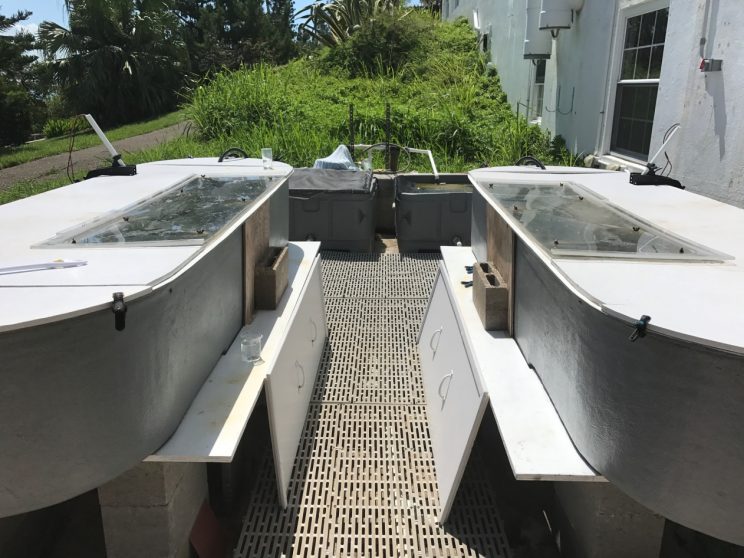
Flumes at BIOS. Two flumes allow for more measurements and a repeat dataset. Flumes are temperature and flow controlled and are connected to a flow-through seawater system, allowing for an influx of new seawater to replenish nutrients for benthic communities.
The goal of this part of the CORAL project is to address the questions:
- Do reef communities show convergence of LUE(ε) (gross productivity) or LUE (ε_N) (net productivity)
- Does Absorptance (A) correlate with either ε or ε_N for reef communities
While these are the guiding questions for the project, my objectives in the study were more applied, as I focused on measuring ε and ε_N for reef community types. This included measurements of productivity, irradiance, and absorptance for the determination of LUE.
In this equation describing LUE, denoted by ε, P represents daily productivity, [Ed(λ;H)] represents the light flux (quanta) incident to the benthos at a given wavelength (λ) and seafloor depth (H), and spectral absorptance [A(λ)] describes the fractional amount of light absorbed by the benthos (non-dimensional). This can then be simplified to productivity over absorpted photosynthetically active radiation (APAR).
Other variables such as temperature, flow, pH, salinity, total alkalinity, daily flume volume, and benthic community characteristics were also measured to see how they may change the LUE of a given community. Different reef community type including coral, macro-algae, turf/ calcifying crustose algae and sand are to be examined in the flumes.
By using the community LUE, scientists are able to detect community types from remote sensing data, and to relate this to reef composition and health. Because productivity changes are driven primarily by light, irradiance is normalized when measuring LUE, allowing for other drivers of productivity to be better understood. In the flumes, potential drivers such as temperature and flow speed could be accounted for by careful measurement of irradiance and productivity.
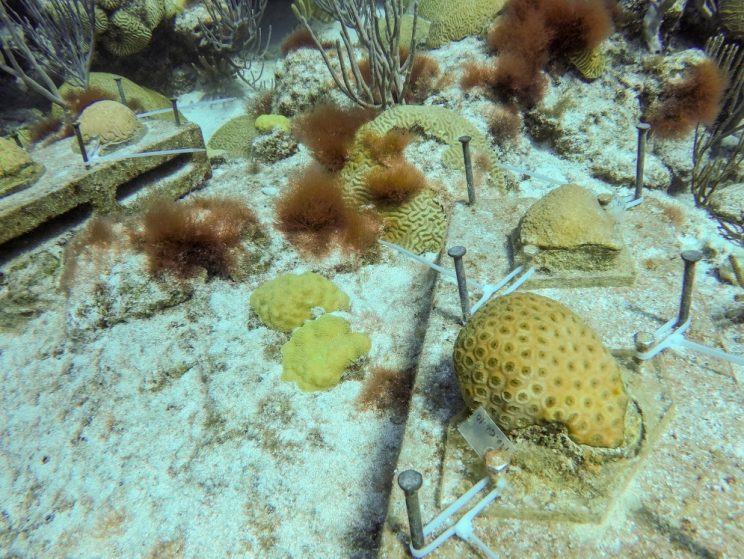
Corals are epoxied to plexiglass bases. When not in use in the flumes they are secured back on the surrounding reef. This allows the same corals to be used for multiple flume runs, both minimizing the amount of coral impacted by studies and allowing for repeat and seasonal measurements.
This research has applications globally. Productivity is an important reef process, and is currently poorly understood, and poorly measured. In the field, productivity measurements are often done over short timescales and may even be harmful to reef communities. This approach would allow for relatively non-invasive measurements of P, as well as large-scale measurements that were previously impossible, especially of remote locations. This method would also allow for comparison of P between different reefs or for time series, as it removes the light variability, therefore allowing scientists to uncover variability in P due to other stressors. This would help us understand reef processes better, ultimately helping to conserve reef systems and understand what a “healthy reef” might actually look like.
The flume studies are still ongoing, but initial data is promising. Next steps at BIOS include continuing flume runs for different communities under a variety of conditions while my next steps include data analysis for the flume runs already completed. This includes data cleaning and summarizing, calculating daily productivity, APAR, and LUE, and photo-analysis of communities to determine benthic surface area, along with many other data tasks.
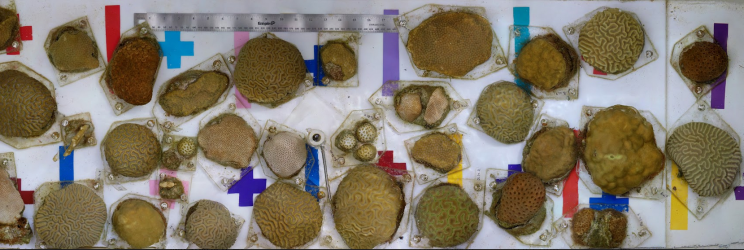
A model of a coral community in a flume. Several hundred individual photos are mosaicked to form one photo of the flume community using the software Agisoft PhotoScan. After this step, the image is opened in imageJ, where surface area of the coral is calculated and used to calculate community productivity.
At BIOS I hoped to gain a better understanding of reef metabolism, improve my SCUBA skills, and learn the intricacies of planning a project and implementing it. BIOS, and my mentors there, definitely helped me achieve all of this and more. While at BIOS I worked on my main Master’s thesis project, and completed rescue diver and AAUS diver training that allowed me to participate in field deployments of instruments for other projects within my research lab. I was also taught new photo software techniques and gained a new knowledge and appreciation for the intricacies of light and the huge, often overlooked, role it plays on reef ecosystems.
Being at BIOS for 6 months was an amazing experience. While I worked hard on my project, there is also a great community at BIOS, and always great things to explore and plenty of other interns or students around. Whether it was volunteering at the Bermuda Rugby Classic, underwater pumpkin carving competitions, hunting for lionfish, exploring the caves and jungles, sailing, or the beautiful town of St. Georges or Hamilton, Bermuda really has so much to offer!
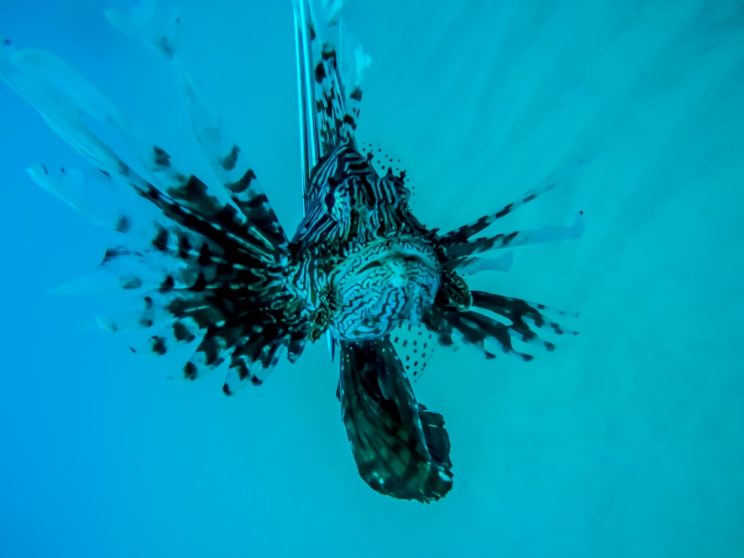
A speared lionfish. Lionfish are invasive throughout the Atlantic and Caribbean, and are a huge threat to local ecosystems. They are highly reproductive, eat an immense amount of local fish, and have no natural predators here. Eat ’em to beat ’em is the slogan in Bermuda, and permits are given after attending a training course for lionfish hunting.
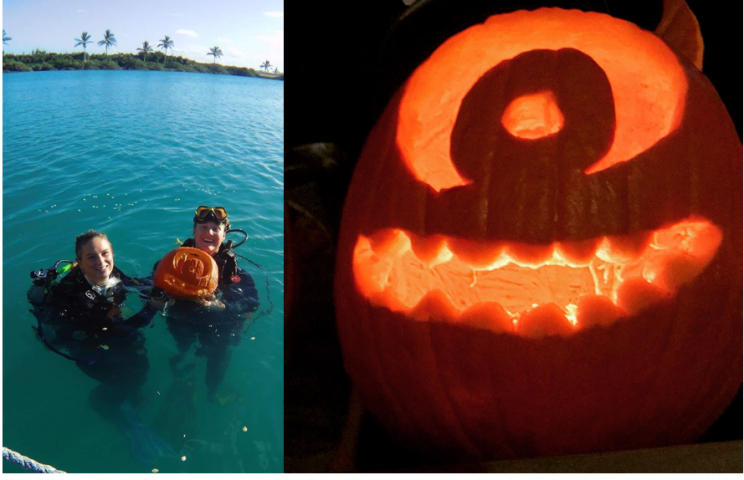
BIOS’ annual underwater pumpkin carving contest. Mike Wazowski (from Monsters, Inc.) earned our buddy pair 1st place!
References
https://www.bermuda-attractions.com
Dierssen, H. M. (2013). Overview of hyperspectral remote sensing for mapping marine benthic habitats from airborne and underwater sensors, 8870(860), 1–7. https://doi.org/10.1117/12.2026529
CORAL Flume Project Proposal. Developed by members of the CORAL project. For more information please visit: https://coral.jpl.nasa.gov/

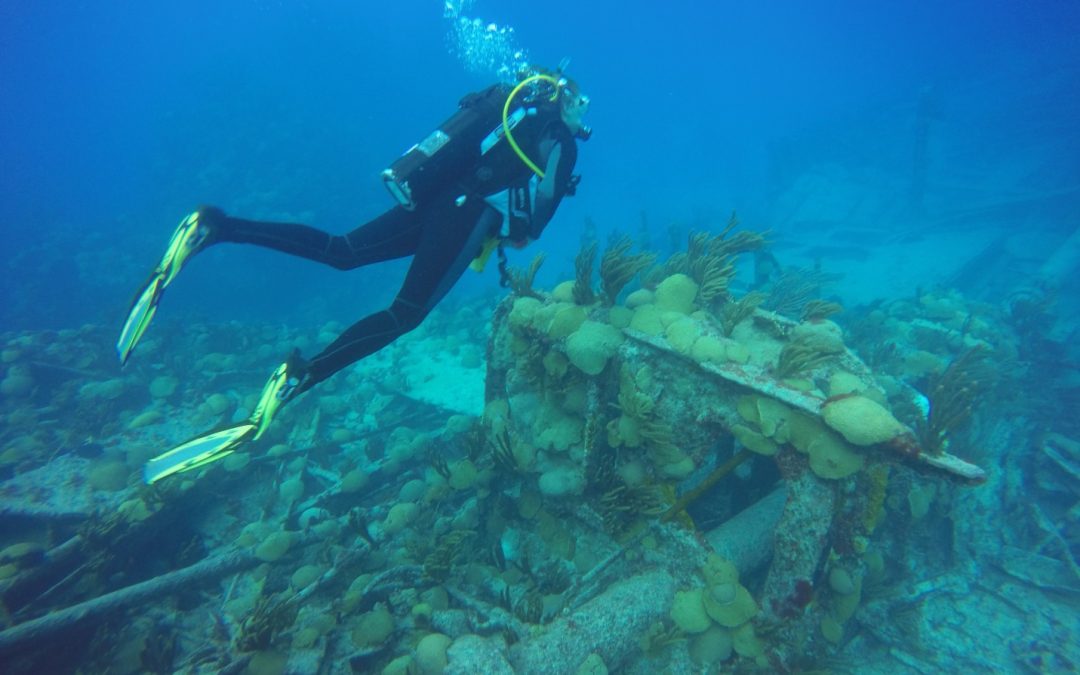
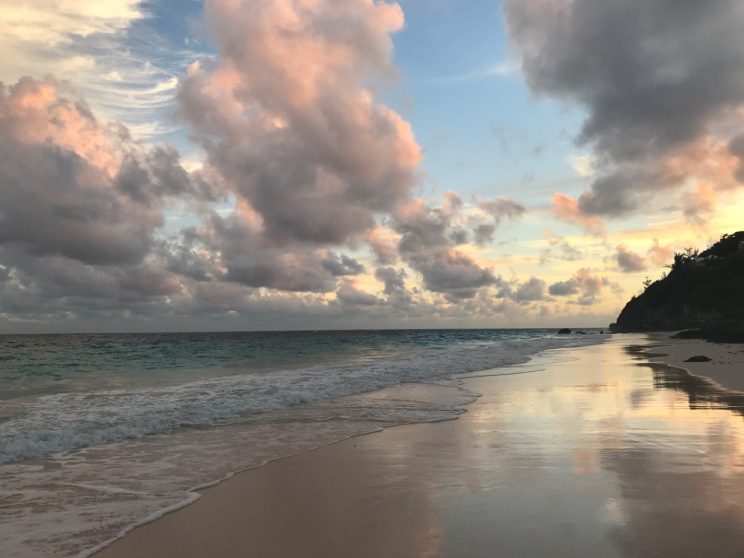




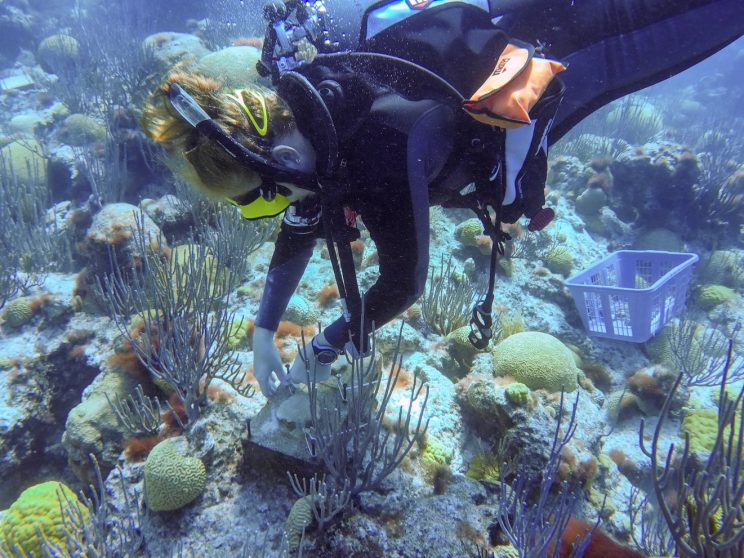

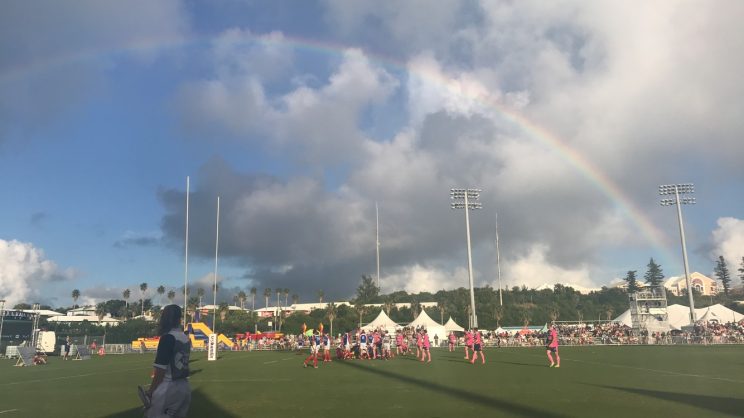
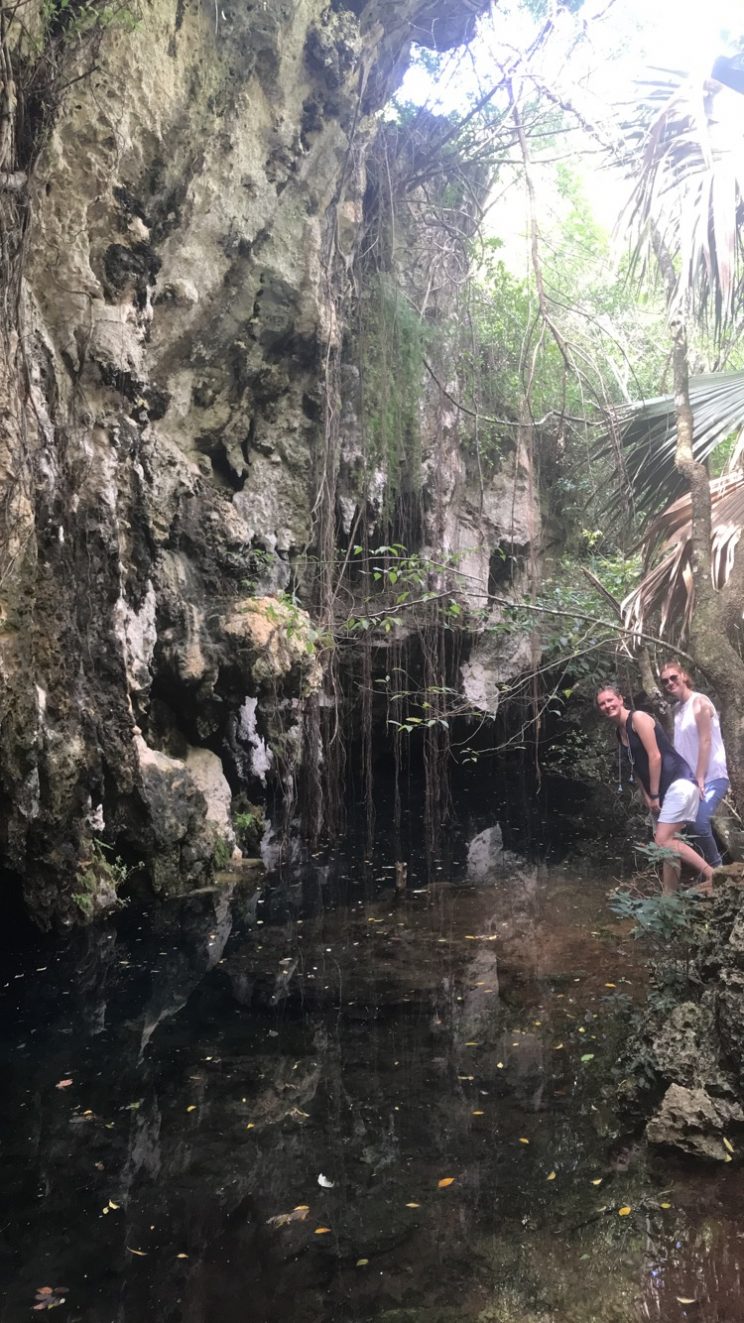
Neueste Kommentare